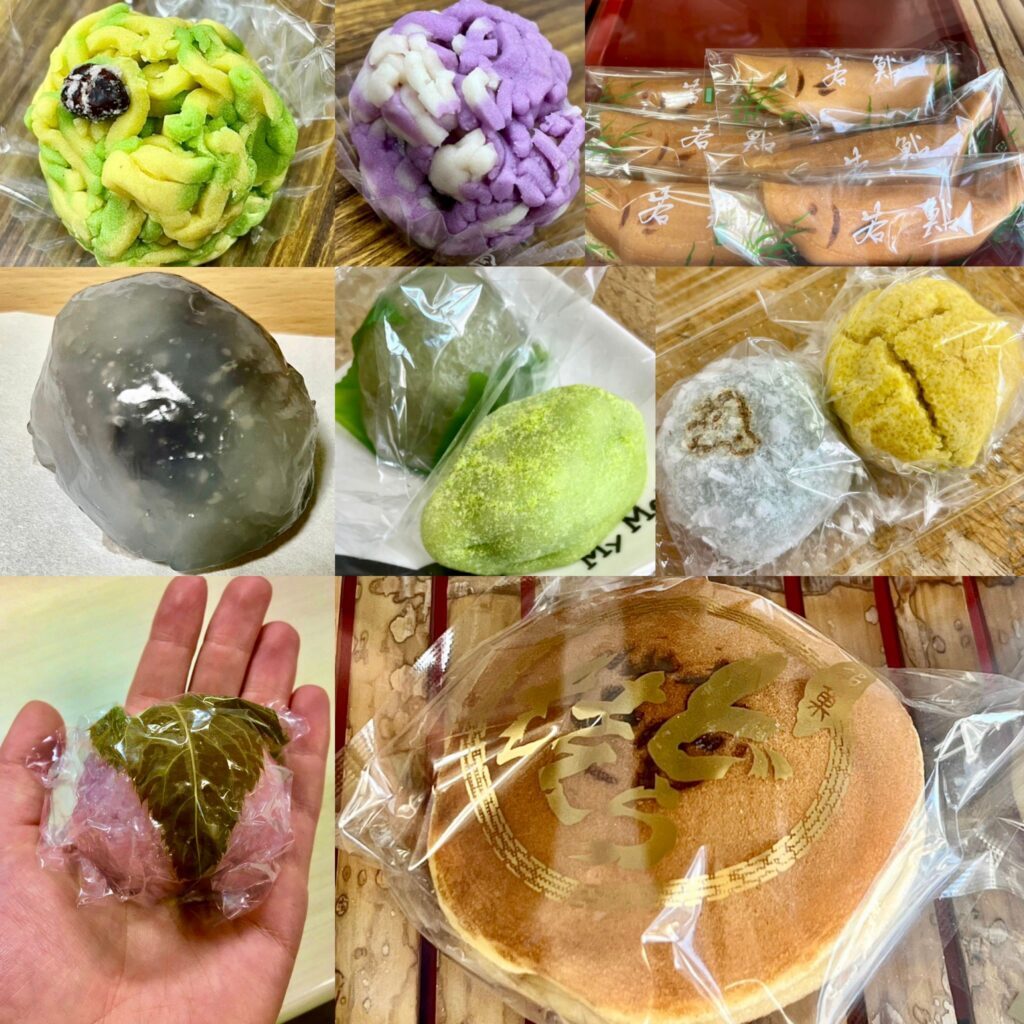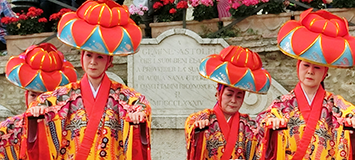SAMURAI BUILD 2F,
1-29 Katori-cho, Nakamura-ku,
Nagoya, Aichi Prefecture, Japan
“Let’s experience the art of Wagashi making with Matcha Tea”
“Let’s experience the art of Wagashi making with Matcha tea”
This is the fifth topic of our “Experience Japanese Culture Firsthand” 🙌
Curiosities about Wagashi, adorable handmade speciality ✨
Definition and history of Wagashi
和菓子: Wagashi
和 (wa) stands for “peace and harmony”. Japanese chose this word in order to represent everything related to Japan.
菓子 (kashi-gashi) stands for sweets.
Wagashi literally means “Japanese Traditional Sweets and they represent the essence of Japanese culture. They are usually enjoyed with a cup of Matcha tea and Served during tea ceremonies ☺️
The roots of Wagashi can be found over two-thousand years ago, but the term “Wagashi” was born during the Meiji Period (1868-1912) when Japan opened its borders to the western trade after 200 years of isolation. Since then, Japanese people have felt the importance of distinguishing Japanese traditional sweets “Wagashi” from the Western ones, called “Yogashi”.
Moreover, Wagashi’s names, colors and designs are very refined as they allude to nature, seasons and Japanese poetry 😮
What are Wagashi made of?
Watchword: simple, vegetable and seasonal ingredients!
The main ingredient is the sweet red bean paste made from azuki beans (anko). Moreover, boiled azuki beans can be sweetened with sugar and then mashed to create either smooth anko (koshian) or chunky anko (tsubuan).
Other ingredients are: brown sugar, rice flour, wheat flour, roasted soybean flour (kinako), sweet potato (yamaimo), plant-based gelatin derived from seaweed (kanten), fruits, cherry blossom leaves, chestnuts, pumpkin etc.

We can also find eggs for example in “Dorayaki”, two flat round and fluffy pancakes filled with sweet red bean paste. Doraemon loves “Dorayaki” too!
Furthermore, Wagashi are vegan friendly (there are many without eggs) and for people who have lactose intolerance🌱
They differ in production method, seasonality but above all for water content. In fact, according to their moisture level, Wagashi are divided into three categories: fresh, semi-fresh and dry.
Let’s make together Seasonal Nerikiri Wagashi!
Nerikiri recipe step by step
Nerikiri dough is made with sweetened white bean paste and glutinous rice flour (gyuhi). Moreover, the word Nerikiri means literally “kneading and cutting” as you have to knit the dough very well! They are very famous for their vivid colors and shapes (flowers, animals, fruits) reflecting the current season.
Moreover, as the dough is very similar to the European marzipan, it can be shaped by hands or by using wooden tools.
We had the pleasure of having Mr. Koie as our instructor!


Mr. Koie was born in Tokoname (Aichi Prefecture) and his Japanese sweets shop is called “Risendou”, founded in 1902 always in Tokoname. He graduated from Tokyo Confectionery School in 1973 and in 1985 he got the confectionery manufacturing Level 1 certification‼️
Nerikiri handwork tools


– Plastic spoon
– Triangular wooden stick
– Rounded wooden stick
– Wet wipes
– Sweet bean paste (three different colours)
I am sure you will say: “Really? Is that all?” Do not be deceived by appearances because it is not so easy as it may seem😁
Once we received the tools, we gathered around the table and we all were excited to see how to make these delicate and delicious sweets! Mr. Koie made six types of Wagashi with ease while explaining the right procedure to us, and we were all captivated by his meticulous craftsmanship😳
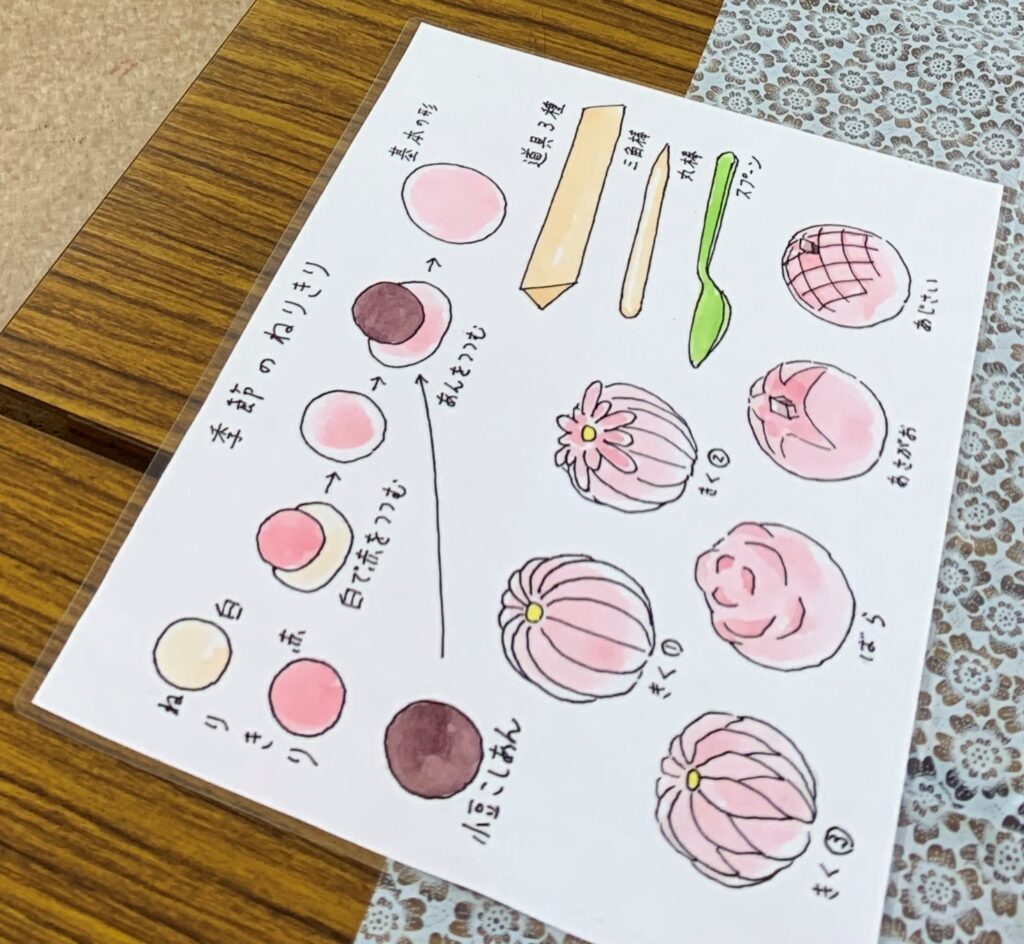
How to make a perfect Nerikiri ball
1) Flatten the white dough in the palm of your hand (be careful not to tear the dough while stretching it)
2) Place the pink dough in the middle of your hand and fold it into a ball.
3) Flatten the pink ball you obtained in the palm of your hand.
4) Choose the uneven colored side and place the smooth red bean paste in the middle.
5) Fold it while making a smooth pink colored ball.
IMPORTANT‼️ Make sure to use the wet wipes during the whole procedure so that the dough will not stick on your fingers and tools.
And now the most interesting part: finally we can start making flower-shaped Nerikiri 🤩

The Chrysanthemum
We have three versions of Chrysanthemum.
The first (A) is the easiest while the third one (C) is the most difficult. In fact, for the last one, we need to get the “confectionery manufacturing Level 1 certification!”😮
We use the triangular wooden stick stick for dividing Wagashi into 12 parts representing the petals.
On the other hand, we use the rounded wooden stick for:
- Marking the center of the flower so we can place the yellow pistil, the final touch.
- Creating the petals of the second Chrysanthemum version (B). In this case all you have to do is just pressing the round bar between the lines, moreover it is not a problem if the petals are not the same lenght because the final effect will be more natural✨

The Rose
We use a plastic spoon to create the petals of the rose 🌹 The size and the depth of each petal depend on the pressure we apply when we sink the spoon in the dough.
Morning glory & Hydrangea
Morning glory and Hydrangea are the symbol of the summer flowers.
For the morning glory we use another type of wooden stick, much thicker than the previous ones listed before. First, you have to put on the Nerikiri a plastic food wrap, then you have to press the stick on it so you will get the morning glory shape.
As Nerikiri sweets are very popular in summer, you can garnish them with a tiny cube of “Kanten” jelly. This will bring a touch of fresheness🍃


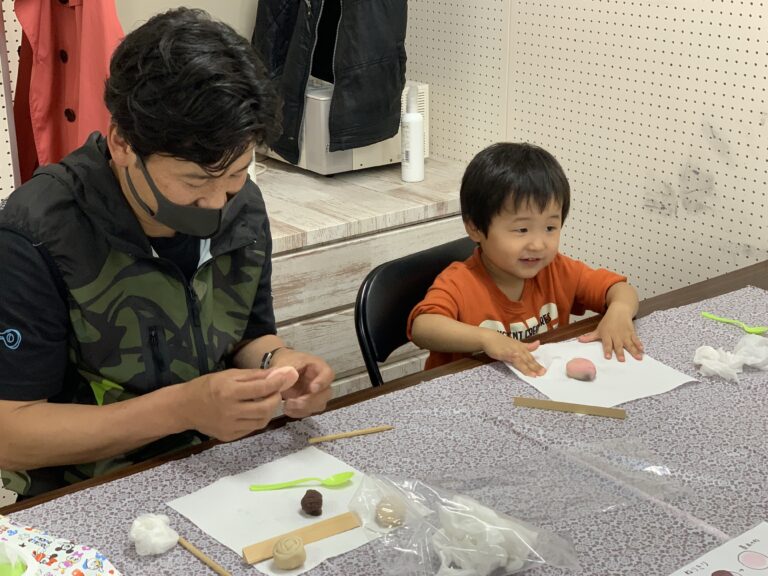

WELL DONE!✨👌
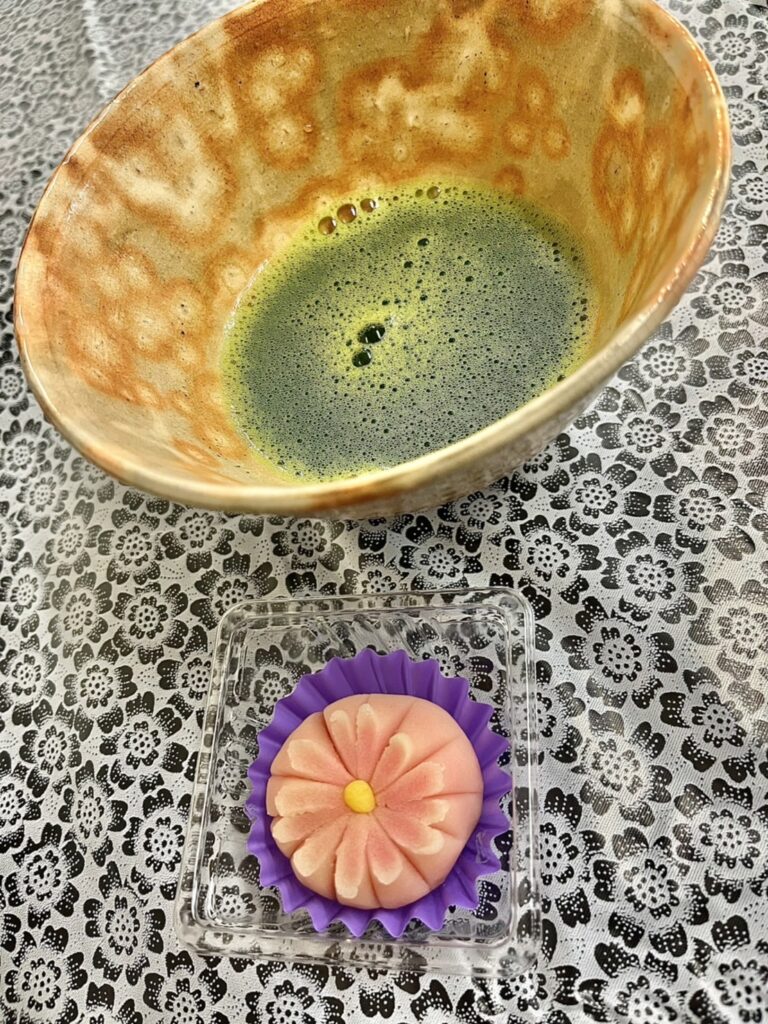
Finally, we can enjoy our handmade “wagashi” with Matcha Tea 😋🍡 🍵
For those who come to Nagoya, I highly recommend “Azumaya” Japanese sweets shop‼️
As I am a Wagashi lover, I am very happy to eat various delicious and fresh Wagashi every time at “Azumaya” 😍
